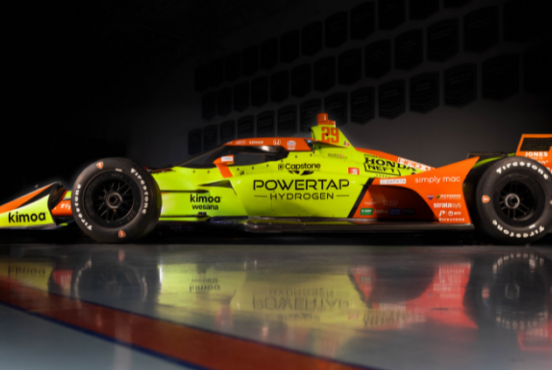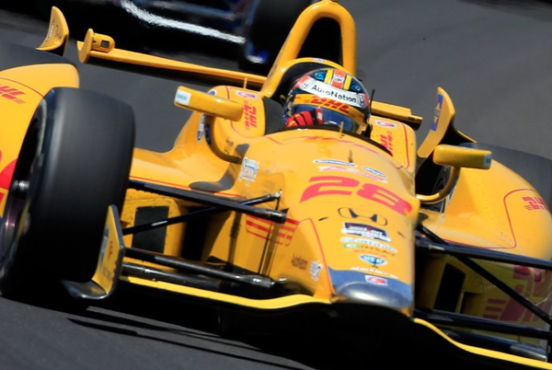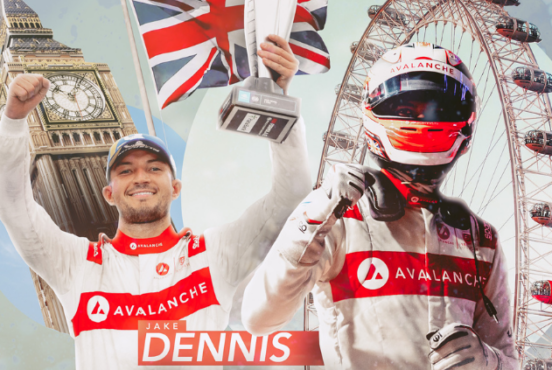Brabham finds lights and sparks in the dark

First of all congratulations. It would have been a travesty if you’d fallen off the Mazda Road To Indy.
Well, this is just a one-off; I don’t have anything for the whole season, or even the next round, at Long Beach. It’s very dependent on how I go at St. Petersburg. The Andrettis have really helped me out to make this happen, as they have in the past, and I’m very grateful to Michael for his efforts, and then I’ve got a couple of smaller sponsors who’ve helped just out of faith in me. If I’d not been able to get in at the first round, it would have become harder to do it later on. Using the first round to try and generate publicity was the right way to go.
Given your championship in USF2000 and your absurdly dominant year in Pro Mazda, people are going to wonder what happened in 2014, with one win and fourth in the championship. Was it just the…er… “unique” handling qualities of the old Lights car that didn’t mesh with your style?
Hmm, combination of a bunch of things; it definitely didn’t go quite the way I planned. If I’d known how to be successful with it and how to be quick with it, we’d have been first in every session and won every race, right?! There was a big learning curve, there was some bad luck involved but yeah, the car had a big thing to do with it. It was an old-style car and it took me quite a long time to get used to it, as it did for a lot of the other drivers who were new to the car. Gabby [Chaves, champion] and Zach [Veach, Andretti Autosport teammate] obviously had experience of the car from previous years, so they dominated the early races, and that momentum pretty much held through to the end of the season. There were points in time when Jack Harvey, Alex Baron and myself got on top of things but…it was a difficult car to learn fast.
But then, I do think that was good practice; to have a struggle with something that was really quite different from anything we’d driven before. I think that in itself is quite good preparation for the future. But the new Dallara IL15 is more like a proper racecar and so the bridge from Indy Lights to IndyCar will be a lot smaller. The new car is a lot more nimble and you can place the car where you want to, but the old car, because it was heavy, almost drove you around the track sometimes.
One of the regular criticisms of the old car was that it understeered, and you had to set up way in advance of the apex. Was the reason you were so quick at the Grand Prix of Indy because trimming the rear wing for that long straight meant you could neutralize the push?
Yeah, definitely that was the track where I felt my car had the best balance, and it was set up in a way that better suited what I want from an open-wheel racecar. And on top of that, I really like that track; I felt very strong from the start.
Zach and I want quite different things from our cars, we were quite a long way from each other in terms of setups. We worked really well together, we were good teammates in that regard and tried to help each other out, but the link between us was hindered a bit because our driving styles were quite far apart. That probably hurt us as a team. Thankfully Shelby [Blackstock, Andretti Autosport’s full-time Lights driver] are more similar in that regard, as I discovered in Pro Mazda.
You’re a fair bit taller and heavier than Zach. Did that give his crew more ballast to move around to get a better setup?
Yes, he’s quite a bit lighter but to be honest, I don’t think that made any difference between us, or affected how we’d have set the car up if we were the same size. Despite our driving styles being quite far apart, we generally made the same comments.
Milwaukee was definitely one that got away from you. You were dominating, pulling out anywhere between two-tenths and four-tenths of a second per lap until that final yellow…
Yeah, that was horrible! We had such a quick car, but that was just my mistake on the restart though. I didn’t go quick enough through the final corner coming onto the straight and Zach got me…
You’ve now had one test day in the new car – obviously not ideal since most of your rivals have spent the winter testing the IL15. But how was it?
Well, it’s a lot more fun to drive, and much quicker. The Mazda AER is turbocharged, and I couldn’t believe how much punch you get out of the corners; the first couple of gears, there is so much more acceleration. I was really impressed at how big a step forward it was. And then the handling…It’s much more like a proper racecar: a super-powerful Pro Mazda car or – from what I’ve heard – the IndyCar. It’s so nimble, goes where you send it on turn-in.
So you’re up to speed?
Well, I think I’m up to speed as far as the driving is concerned, but we now want to develop and sort through the car. We got a lot done on Monday, and we have some good ideas and theories about St. Pete, but it’s hard to know where we’re at because the road course at Homestead doesn’t really relate to anywhere on the Lights schedule. There are just as many things you can change on the IL15 as on the old car, so that opens up quite a lot of areas, especially on the front and rear suspension geometries. But I think because it’s a street track where no one can test and this car is so much different from the old one, there are going to be a lot of people stabbing in the dark.
Formula E – I assume you have to learn to adapt, but not actually let any of that car’s peculiarities become ingrained and become bad habits for your primary “job”. Is that difficult?
It’s not too difficult, because I’ve been thrown into situations where I’ve had to adapt quickly – the previous Lights car, for example. I mean, they’re both heavy cars! Being aware of how you’re driving a car and listening to drivers with more experience helps. I spoke to Shelby a lot about the new Indy Lights car, and I spoke to Formula E drivers about their car, too, just so I wasn’t missing anything obvious in how to get the best out of it. Ease into a driving style that works and let it come naturally, and if you’re doing anything wrong, the engineers have data to show you where you’re losing time or could do things better.
Do you enjoy the Formula E cars?
Yeah, I like racing, period! Obviously there’s a long way to go and it’s a brand new series so there are a lot of improvements they could make. Having said that, I’m in a good team, and the cars are quite fun to drive. But the focus of the series isn’t about developing the cars themselves; it’s on the electric motors and how the technology can be applied, so the cars are quite basic and the teams are close setup-wise because there isn’t much you can change to personal taste.
They’re heavy because of the electric motor, there’s no grip because of the road tires, and they slide around a lot, but that’s fun. The torque is instant, and that shifts the rear around, almost like a kart. The other strange thing to me is that because of the torque, it almost doesn’t matter what gear you’re in – if you accidentally grab the wrong gear, you can exit almost as quick as if you’d got the right one.
They’re nowhere near being the fastest cars I’ve driven, but it’s been educational; it is fun to learn about the electrical systems. Obviously, I’ve only ever been in cars that are already set up and you’re just altering things to suit your driving style. With Formula E, I’m actually helping developing the technology with the team.
And with regenerative units, does that alter how you brake in terms of how soon and how hard you hit the pedal?
You have to apply most of the pressure at the start of the braking zone because of the inertia effect on the wheels; apply it at low speed, and you’re more likely to lock the wheels. But the braking curve is pretty similar to a regular car. What I have found, though, is that the regenerative system changes the brake bias around. The regenerating system is on the rear, so every time you hit the brakes and it cuts in, it alters the brake bias, so a lot of the drivers are being quite conservative on the brakes, trying to factor that in.
Sounds like you’re becoming a bit of an expert on electric systems…
Well, there’s a reason why a lot of the drivers, including the ones doing best, are guys with knowledge from Formula 1 and WEC of how to use these systems and how to save power. Whereas for me, I got a surprise when I went to the safety briefing and learned things like how you’re supposed to exit the car. If you crash, because the car’s so electric, you don’t want to bridge it with the ground, so you have to jump in the air and clear it. I spoke to Jean-Eric Vergne, and he said yeah, they’ve been doing that for years in F1 because of the KERS systems. Something I hadn’t heard about.
OK, back to Indy Lights. How would you rate your chances this weekend?
Honestly, it’s impossible to know because you can’t even guess at who the strongest teams are like you could with the old car. No one gets to test St. Pete, and there’s not a lot of practice time before we’re into qualifying. I think the drivers who have experience of the track will be at an advantage, and those with more experience of the cars will be at an advantage… so anyone with both is going to be looking good. But I think there are so many variables to discover about the car, I think it’s very open. I just know that I’m very grateful to be one of those with a chance.
And then after these two races, I’m going to get right back on trying to make Long Beach happen, too…


